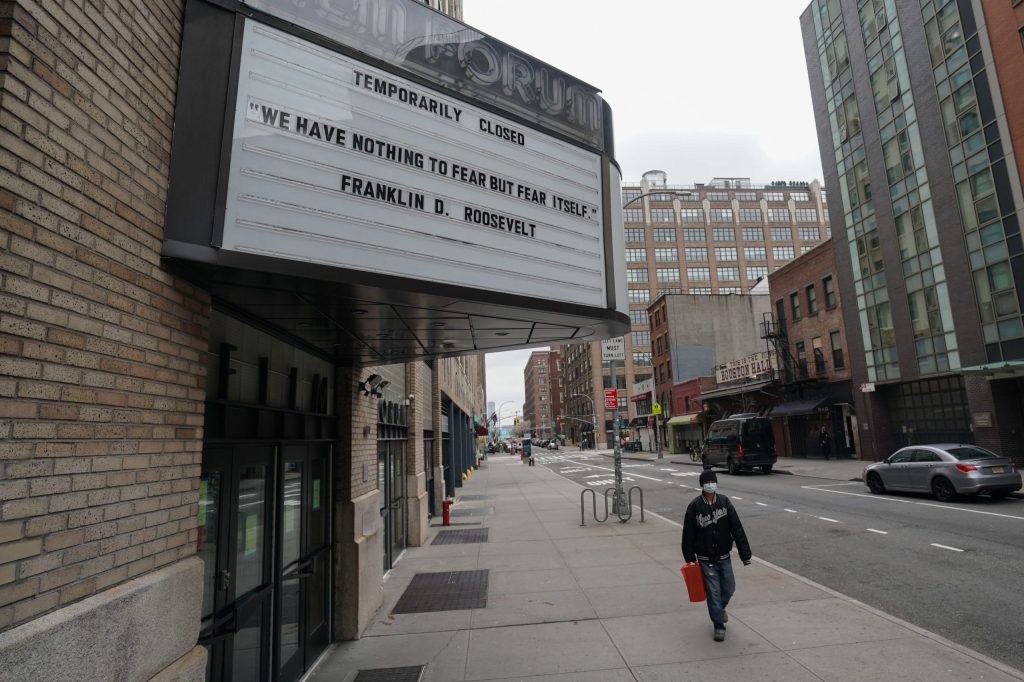No one has modeled an economic lockdown before: no one knows what to expect. But the daily data is shocking, and points to a huge economic effect. In America, the number of people applying for unemployment benefits surged to an unprecedented three million last week.
We simply have not seen anything like this before, not even during the financial crash: the COVID crash has led to 3,283,000 claims — quadruple the previous record-high of around 700,000 in 1982. This surge in applications is one of the biggest indicators so far of COVID-19’s quick and devastating impact on the world economy, and will give policymakers food for thought as they decide how long to continue with the lockdown.
What’s telling about the applications surge is not just the number, but the speed at which they’ve risen: three weeks ago, fewer than 200,000 people submitted for jobless benefits. America has gone from a historically low number of applications to exceeding its record-high — all in less than a month.
Just last month, the president used his State of the Union address to boast about record-low unemployment rates and rising wages. Now all of that good work — achieved painstakingly over many years — has been undone.
All 50 states have seen their applications go up. According to Bloomberg, Pennsylvania is reporting the highest number of claims, reaching 378,900, while New York State — which has a particularly high number of confirmed COVID-19 cases — saw applications rise by over 14,000. These figures from America’s Bureau of Labor Statistics foreshadow their estimates for unemployment figures in March, which will be published next Friday.
This news follows yesterday’s first wave of analysis of COVID-19’s potential effect on unemployment figures in the UK and the Eurozone, which would see the rate rise to 6 percent and 12 percent respectively. It also comes less than a day after Congress agreed to a bipartisan coronavirus stimulus package, worth $2 trillion in direct payment to households, business support and healthcare provisions. Similar to the UK, the US emergency package includes hundreds of billions of dollars’ worth of loans to small and large companies to see them through this period of lost business and income. However, US provisions have focused more on direct income top-ups for individuals (a means-tested $1,200 each), and substantially increasing unemployment insurance benefits — up to $600 a week for four months.
This emphasis on increasing unemployment protection rather than on preserving jobs is radically different to approaches in other countries: Britain’s second stimulus package, focused on employees, offered to pay up to 80 percent of salaried employees’ wages, with a cap of £2,500pm ($3,000), specifically to avoid as many job losses as possible (a move that has, in these topsy-turvy times, garnered praise for the Tory chancellor from America’s most famous socialist: Bernie Sanders). This distinction may be contributing to the drastic, overnight reversal of America’s unemployment figure trajectory.
But whichever stimulus package you take, no amount of welfare in the world can off-set the inevitable economic pain COVID-19 brings with it: businesses being destroyed, workforces splitting up, companies that were just about managing now going over the edge. And what has yet to be calculated (but urgently needs to be) is the human cost of all of this. As Sajid Javid wrote in his Spectator diary recently, ‘behind every figure in any Budget lie thousands of human stories.’ Behind the global surge in unemployment will lie all too many human tragedies, for individuals, families, and communities. It’s these people we should keep in mind as we watch the trajectory of this economic free-fall.
This article was originally published onThe Spectator’s UK website.


















